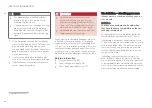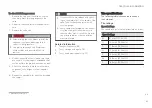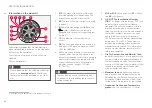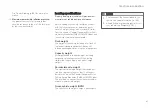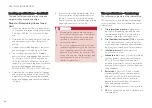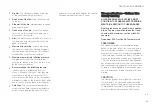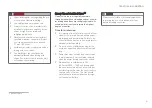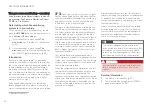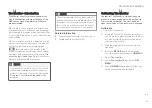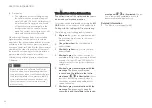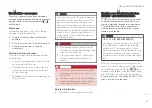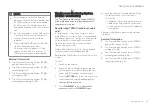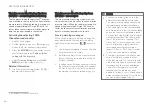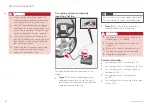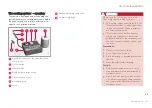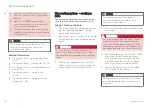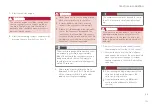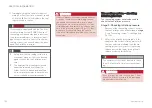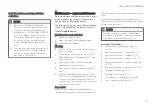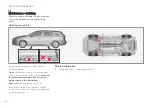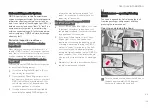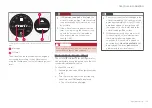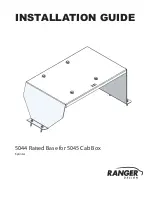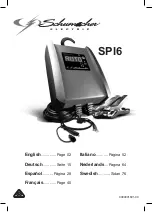
PRACTICAL INFORMATION
98
Tire Pressure Monitoring System
(TPMS) – activating/deactivating
The tire pressure monitoring system
16
uses sen-
sors mounted in the tire valves to check inflation
pressure levels. When the vehicle is moving at a
speed of approximately 20 mph (30 km/h) or
faster, these sensors transmit inflation pressure
data to a receiver located in the vehicle.
Activating/deactivating TPMS
(Canadian models only)
1. Switch off the engine.
2. Put the ignition in mode
I
or
II
modes (p. 65) for additional information).
3. Press the
MY CAR
key in the center console
control panel and select
Settings
Car
settings
Tire pressure
4. Select
Tire monitoring
and press
OK/
MENU
to turn the system on or off.
Related information
•
Tire Pressure Monitoring System (TPMS) –
general information (p. 95)
Tire Pressure Monitoring System
(TPMS) – messages
The tire pressure monitoring system uses sen-
sors mounted in the tire valves to check inflation
pressure levels. When the vehicle is moving at a
speed of approximately 20 mph (30 km/h) or
faster, these sensors transmit inflation pressure
data to a receiver located in the vehicle.
Erasing warning messages
When a low tire pressure warning message has
been displayed and the tire pressure warning
light in the instrument panell (
) has come
on:
1. Use a tire pressure gauge to check the infla-
tion pressure of all four tires.
2. Re-inflate the tire(s) to the correct pressure
(consult the tire pressure decal on the driv-
er's door opening).
3. In certain cases, it may be necessary to drive
the vehicle for several minutes at a speed of
20 mph (30 km/h) or faster. This will erase
the warning text and the telltale will go out.
•
The tire monitoring systems use a tem-
perature compensated pressure value.
This pressure value is dependent on tire
temperature and ambient temperature,
which can differ from the recommended
cold tire pressure in the tire inflation table
and on the tire pressure placard located
on the driver's side B-pillar (the structural
member at the side of the vehicle, at the
rear of the driver's door opening). This
means that it may sometimes be neces-
sary to inflate them slightly above the
recommended cold pressure value
(approx. 3-4 psi or 0.2-0.3 bar) in order
to reset a low tire pressure warning.
•
To help avoid incorrect tire inflation pres-
sure, if possible only inflate the tires
when they are cold. The tires are consid-
ered to be cold when they have the same
temperature as the surrounding (ambi-
ent) air. This temperature is normally
reached after the vehicle has been
parked for at least 3 hours. After driving a
distance of approximately 1 mile (1.6 km),
the tires are considered to be hot.
16
Not available in all markets or in all models.
Summary of Contents for V60
Page 1: ...OWNER S MANUAL SUPPLEMENT ...
Page 2: ......
Page 8: ......
Page 9: ...INTRODUCTION ...
Page 24: ......
Page 25: ...IMPORTANT INFORMATION ...
Page 64: ......
Page 65: ...PRACTICAL INFORMATION ...
Page 144: ......
Page 145: ...FUSES ...
Page 156: ......
Page 157: ...SPECIFICATIONS ...
Page 161: ...SPECIFICATIONS 159 Dimensions This section lists your vehicle s most important dimensions ...
Page 175: ......
Page 176: ...TP 23838 English USA Canada AT 1717 MY18 Copyright 2000 2017 Volvo Car Corporation ...

